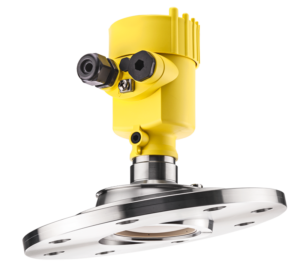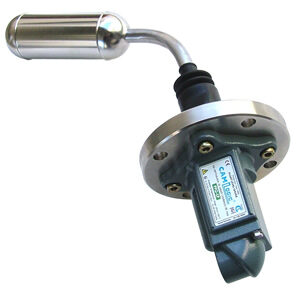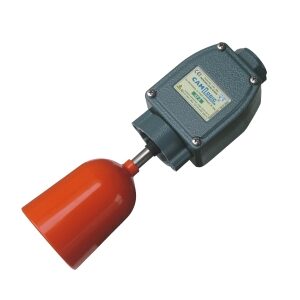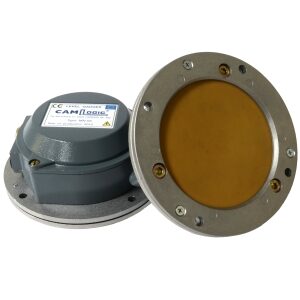Level measurement systems in industrial processes
Masiste supplies and installs sensors for level measurement, level and pressure detection complemented by electronic instrumentation and software for integration with the control systems of any industrial process. Measurement technology lays the foundation for operational reliability, measurement accuracy and cost-effectiveness for all products and process conditions.
Our range of level gauges allows reliable measurement of the level of material inside hoppers, tanks or silos.
Different storage facilities require specific solutions, with high quality level gauges, able to respond to critical problems such as use in high temperature environments or in contact with corrosive materials. The products are resistant to atmospheric conditions and can therefore also be used in outdoor installations. The chemical and physical characteristics of each material guide the choice of the right type of level indicator. Thanks to the wide range of its monitoring instruments and accessories, it can provide a suitable solution for monitoring any material.
High temperature
Level indicators for situations where the internal silo temperature is very high. Different versions are available: 200°C Max. - 400°C Max. - 600°C Max.
Corrosive
Level gauges used in contact with corrosive solid or liquid materials. All parts in contact with the material are made of stainless steel (AISI 304 unless otherwise stated).
We offer:
- Technical advice on the selection of the most suitable sensor.
- Fast delivery time.
- Easy handling and configuration of the sensor in all applications.
- Reliable and accurate measurements and a long sensor lifetime.
Sectors of application:
Building materials, cement industry, mining, food industry, water and waste water, chemical industry, environment and recycling, oil industry, paper industry, energy, etc...
Radar level measurement
In non-contact radar level measurement, the measuring instrument sends a microwave signal from above to the product, which reflects this signal. The microwave signals received by the measuring instrument are used to calculate the distance to the product surface and the level.
These measuring methods are used to measure liquids and solids and have the following advantages: non-contact radar level measurement is characterised by its high measuring accuracy and is unaffected by temperature, pressure and dust generation, and radar level measurement systems save time due to simple adjustment.
Ultrasonic level measurement
In non-contact ultrasonic level measurement, the sensor emits ultrasonic pulses in the direction of the product, which reflects these pulses. The time from emission of the signals to reception is proportional to the level in the tank. Ultrasonic sensors are suitable for simple standard applications in liquids and solids.
Capacitive level measurement
In capacitive level measurement, the capacitive sensor and the tank form the two electrodes of a capacitor. Any change in level causes a change in capacitance, which is converted into a level signal. Thanks to the trimmable versions of cable and rod probes, capacitive level sensors cover a wide range of applications. Their advantages include the ability to measure without dead angles along the entire length of the sensor, the ability to measure corrosive liquids and the cost-effective measuring systems due to trouble-free and maintenance-free operation.
Limit level detection with vibrating level switch
In level measurement with a vibrating level switch, the vibration of a rod or a fork is activated. If the vibrating probe comes into contact with the solid, the vibration changes and the vibrating level switch issues a switching command. Vibrating level switches are used as overfill protection or vacuum detectors in liquids and bulk solids or powders.
The main advantages of vibrating level switches are their easy installation and commissioning without the need for product as well as reliable level measurement, independent of installation position, pressure, temperature, foam, viscosity and particle size.
Level measurement with capacitive level switch
In capacitive level measurement, the capacitive sensor and the tank form the two electrodes of a capacitor. Any change in level causes a change in capacitance, which is converted into a switching signal. Thanks to the cuttable versions of the cable and rod probes, the level switches are suitable for all kinds of applications and are mainly used as overfill and dry run protection and for oil/water and foam detection.
The advantages of these measuring systems include the fact that the level switch can be installed in any position and the fully insulated versions can also measure in corrosive liquids, making them an economical level measurement for maintenance-free operation.
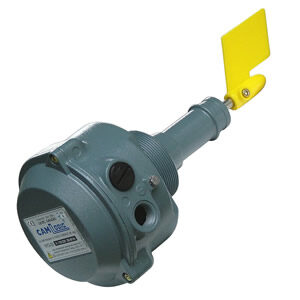
Rotary level control
Rotary level indicators whose operation is based on the continuous rotation of the blades, which stop when they meet the resistance of the material, activating the micro switch that signals the presence of the material to be measured and monitored.
The rotary level sensors can be installed vertically or horizontally in silos and cells for storing, loading and unloading powders and granules. The tool can be customised with electronic options other than stainless steel models for corrosive or high temperature materials. A large number of accessories can be combined to obtain the best quality tool for any type of solid material. The tool does not need ordinary maintenance.
Floating level control
Level indicators suitable for detecting the level of liquids in tanks and cisterns. The operation is based on a float which, if moved by the liquid, reaches such an inclination as to activate the internal microswitch.
Floating sensors can be installed horizontally, parallel to the liquid or, in the case of the bent type, on a sloping wall.
Pendulum level control
Instruments whose operation depends on the fact that all powdered materials or granules form, at the top of the silo, a cone whose angle at the apex is always quite steep. When the level of the material rises, the pendulum will move causing the activation of an electrical contact.
Pendulum-based level indicators can be installed in a vertical position by using a special tube, screwed into the hole provided for this purpose.


